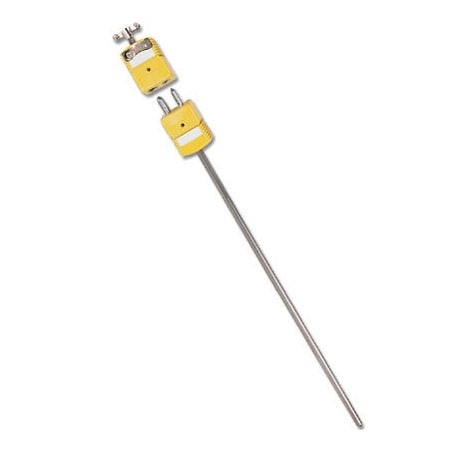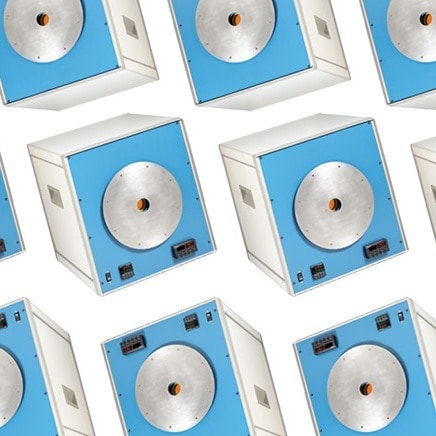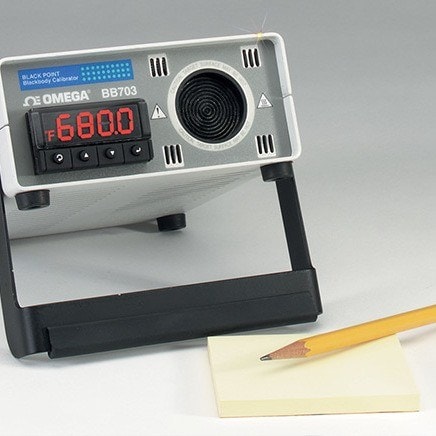K-Type thermocouples are among the most commonly used temperature sensors in industrial environments, prized for their durability, wide temperature range, and cost-effectiveness. Comprised of Chromel (Nickel-Chromium) and Alumel (Nickel-Aluminum), this thermocouple type operates based on the Seebeck effect – generating a voltage in response to a temperature gradient across two dissimilar metals.
These sensors are ideal for monitoring and controlling temperature in processes that demand both precision and reliability. Their widespread use spans manufacturing, energy, aerospace, and process industries.
Why Choose a K-Type Thermocouple?
| Feature | Industrial Benefit |
|---|---|
| Temperature Range | Handles -200°C to 1,260°C, enabling accurate monitoring in extreme environments like furnaces or kilns. |
| Rugged Construction | Durable sheaths protect against corrosion, vibration, and mechanical wear in harsh industrial processes. |
| Fast Response Time | Rapid detection of temperature changes is essential for combustion tuning, profiling, or closed-loop control. |
| Cost-Effective | Delivers reliable thermal sensing at lower cost than RTDs or IR sensors, especially in high-heat zones. |
| Widely Supported | Integrates easily with PLCs, controllers, and instruments across a wide range of industrial platforms. |
Industrial Applications
K-Type thermocouples are trusted across a broad range of industrial sectors due to their wide temperature range, mechanical durability, and fast response characteristics.

-
Heat Treating & Forging Furnaces
-
In metal processing industries, K-Type thermocouples are used to monitor and control temperatures in annealing, carburizing, hardening, and tempering processes. Their stability at elevated temperatures and resistance to oxidation make them suitable for continuous operation in high-heat environments, ensuring material consistency and structural integrity.
Combustion Chambers (Turbines, Engines, Boilers)
-
Accurate temperature monitoring within combustion zones is vital for optimizing fuel efficiency, reducing emissions, and preventing thermal overload. K-Type thermocouples are often embedded in burner assemblies or turbine exhaust systems due to their ability to withstand rapid thermal cycling and vibration.
Semiconductor Manufacturing
-
Thermal precision is critical in wafer processing, diffusion furnaces, and chemical vapor deposition (CVD) systems. K-Type thermocouples are used to tightly control heating elements and process chambers, contributing to yield optimization and repeatability in sub-micron scale operations.
Food Processing & Autoclaves
-
In regulated industries such as food and pharmaceutical manufacturing, K-Type thermocouples ensure that sterilization cycles meet required thermal exposure standards (e.g., HACCP or FDA guidelines). Their fast response and compatibility with steam and pressure environments make them well-suited for monitoring batch or continuous thermal processing.
Kilns, Incinerators, and Ceramic Processing
-
In industries dealing with refractory materials, glass, or waste incineration, long-term thermal stability is essential. K-Type thermocouples are often inserted through ceramic tubes or refractory insulation to continuously monitor temperature profiles, prevent overfire conditions, and support compliance with emissions control protocols.
Key Considerations When Selecting a K-Type Thermocouple
Choosing the right K-Type thermocouple for your application depends on more than just temperature range. Several factors influence sensor performance, longevity, and compatibility with your process environment.
Temperature Accuracy
Thermocouple accuracy is governed by ANSI standards and varies depending on the application and tolerance class.
-
✔ Standard Accuracy (ANSI MC96.1)
-
±2.2 °C or ±0.75% of the measured value — suitable for general-purpose applications.
✔ Special Limits of Error (SLE)
-
±1.1 °C or ±0.4% — tighter tolerance for applications requiring higher precision. Must be explicitly requested at the time of specification.
Sheath Material
The outer sheath protects the thermocouple from mechanical, chemical, and thermal damage. Selection should be based on process conditions.
-
✔ Standard Accuracy (ANSI MC96.1)
-
General-purpose use with moderate corrosion resistance.
✔ Inconel®
-
Excellent for high-temperature or oxidizing environments, especially in combustion and heat treating.
✔ Ceramic
-
Best for extreme temperatures or chemically aggressive environments like kilns or glass manufacturing. Fragile but highly heat-resistant.
Junction Type
The configuration of the thermocouple junction impacts both response time and signal stability.
-
✔ Grounded Junction
-
Welded directly to the sheath for fast response time. Ideal for dynamic processes but more susceptible to electrical noise — avoid near high-voltage equipment.
✔ Ungrounded Junction
-
Electrically isolated from the sheath. Offers superior noise immunity and is preferred in systems with PLCs, VFDs, or other sensitive electronics.
✔ Exposed Junction
-
Provides the fastest response and highest sensitivity. However, it is fragile and best used in clean, non-corrosive gas streams where physical protection isn’t a concern.
Comparing Thermocouple Types
| Type | Temperature Range | Sensitivity | Oxidation Resistance | Stability | Common Uses |
|---|---|---|---|---|---|
| K | -200 to 1,260°C | Medium | High | Moderate | Industrial furnaces, engines, kilns |
| J | -40 to 750°C | High | Low | Moderate | Plastics, packaging, HVAC |
| T | -200 to 350°C | High | Excellent (moisture) | High | Cryogenics, food processing |
| N | -200 to 1,300°C | Medium | Excellent | High | High-temp precision, harsh environments |


